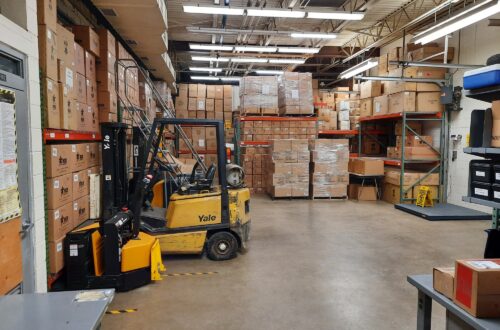
The Rhythm of Success: Key KPIs for Collision Shops
Published in AASPMN News – Thomas Greco Publishing
How do you measure success in your shop?
 Some owners define success simply by looking at the dollars they have in the bank, while others take a more holistic approach of measuring a variety of key performance indicators (KPIs); however, with the many changes that shops have been forced to make in recent years – due to the pandemic, technological advances, the lengthening average age of the vehicles and changes in consumer behavior – it’s easy to fall into a pattern of collecting a ton of data and never doing anything with it.
Some owners define success simply by looking at the dollars they have in the bank, while others take a more holistic approach of measuring a variety of key performance indicators (KPIs); however, with the many changes that shops have been forced to make in recent years – due to the pandemic, technological advances, the lengthening average age of the vehicles and changes in consumer behavior – it’s easy to fall into a pattern of collecting a ton of data and never doing anything with it.
Those numbers mean something, but if your shop’s KPIs have become little more than background noise, it may be time to take a step back and tune into what really matters. That begins by reviewing those figures a little more frequently than shops typically do.
“Most shops are reactive instead of proactive when it comes to monitoring their KPIs,” laments Dave Luehr (Elite Body Shop Solutions). “When you only review KPIs at the end of the month, the damage has already been done. I teach shops to take a look at the most important numbers every day. Knowing what’s happening right now allows them to drive their business forward; it’s like driving through the windshield instead of the rearview mirror.”
Luehr recognizes that might seem daunting, which is why he partnered in developing Bodyshop Toolbox, a system that automatically pulls data from the shop’s management system “so they proactively know how they’re performing each day relative to their goals.”
So, what are the most important KPIs for successful collision shops to track?
“Capture rate is the number one KPI to focus on,” according to Mike Anderson (Collision Advice). “If you’re not capturing work, no other KPI matters. A high capture rate ensures that shops are consistently bringing in vehicles. Without that, even the best operational efficiencies and customer satisfaction metrics won’t make a difference.”
Some other numbers he recommends tracking include average labor hours per RO by category (body, paint, mechanical, frame, etc.), average sales per technician and sales mix which drives gross profit. “KPIs are how you measure your success, so it’s important to monitor them, but NO KPI should ever trump safe and proper repairs.”
Luehr takes a different approach to KPIs, following the footsteps of Nick Saban, a college football coach who was famed for winning seven national titles, the most in college football history. Saban views outcomes as a distraction and believes it’s more important to focus on the process needed to achieve the desired outcome.
“A lot of KPIs emphasize the outcome,” Luehr notes. “For example, CSI is a very popular KPI, but that’s an outcome. If we focus on the process, the outcome takes care of itself. If we only measure outcome KPIs, we lose sight of the big picture, but when we hone in on what it takes to be successful today, the desired outcome is a foregone conclusion. Shops that want to ‘win championships’ focus on the KPIs in the now – during the process – by measuring the steps in the process, like how often and how well they update clients. And their trophy is that high CSI score they’re seeking.”
Gross profit is another major metric because shops “have to generate enough revenue to pay their expenses and have a net profit left over,” but Luehr feels it’s more important to dissect that number by looking at individual centers within the broader category. “What are you making on labor, parts, materials and sublet? If we look at these numbers daily, we can build the profit into each job during the repair planning process; we want to create wealth instead of leaving our financial destiny to chance.”
Touch time is typically viewed as a way to measure cycle time. Luehr views it as a measure of efficiency within the system. “The better the touch time, the more productive we are.”
Luehr credits his method of measuring cycle time to one of his mentors, Ron Kuehn. Instead of looking at cycle time as the total labor hours on a job, he recommends breaking it into different segments of the process: arrival to repair started, repair start to completion and repair completion to delivery. This allows shops to identify where efficiencies may be getting lost. “These categories allow us to know where delays might be happening. It highlights if we have an inefficiency in our admin systems, in repair planning or production.”
When determining which KPIs to track, the most important question shops should be asking themselves is why they’re monitoring that data.
“I visited a shop that had a bunch of charts posted on the wall, and the owner explained they were records of his technicians’ efficiencies,” Anderson recalls. “When I asked what actions he took because of that information, he told me he just wanted to know; his technicians didn’t do anything differently based on those charts.
“Data tells you to do one of two things: monitor it or figure out how to improve it,” he adds. “We should be tracking data to activate change; don’t waste time monitoring a KPI if you aren’t going to use what it teaches you to make a positive change for your business.”
Luehr agrees. “I know shop owners who look at every imaginable KPI in their business, but that’s only applaudable if they actually use that data to improve their business. Rather than measuring something like ounces of clear coat per RO, start by focusing on the basics, like getting the repair plan right, before diving into the minutiae. There are a million different things you can track, but should you?”
Instead of getting lost in the weeds, he recommends investing time in analyzing high-leverage KPIs which are “an indication of something going on in the business that you need to pay attention to. We like to measure how long it takes for shops to close files because it is an indicator of how well they are managing the file throughout the repair process. Usually shops with poor file management also have excessive accounts receivable. Work-in-process (WIP) is also valuable to measure; having an optimum WIP impacts every other KPI in the business. Too little WIP obviously has a negative impact on profitability, but having too many cars on the lot can lead to a high cycle time and a poor customer experience.”
Negative CSI is one of the largest factors that contribute to a poor gross profit, so it’s imperative that shops keep a close eye on the customer experience. “CSI surveys reveal your blind spots,” Anderson says. Online reviews are also important; “If you’re not getting a lot of Google reviews, the first thing you should question is whether you’re really providing an extraordinary experience. People go online to post reviews to do one of two things: complain about you or tell people that you did something amazing. Don’t become complacent because you’re not getting complaints; we should be striving to do something so extraordinary that our customers want to take the time to tell others how amazing their experience with our shop was.”
“CSI can create a false sense of security because it doesn’t tell the whole story,” Luehr cautions. “A shop with an average CSI score of 97 percent may find that only seven percent of customers actually refer them to family and friends because the shop did not provide an experience that met important emotional factors, like instilling confidence and demonstrating integrity and pride. Shops need to be consistent. A customer isn’t going to refer a shop with inconsistent service because they don’t want their family and friends to be upset with them, but if a shop constantly meets their emotional needs, they will go out of their way to refer people because they want to feel helpful.”
Anderson offers a similar word of warning: “Make sure you understand the difference between customer service and customer experience; customer service is how we treat the customer, but customer experience is how they felt they were treated.”
Although multiple issues throughout the repair process can impact CSI, the biggest impact to CSI lies on the shoulders of a shop’s employees. Anderson recommends “doing employee reviews several times each year just to make sure that employees are happy, to see what their performance was over the past year and identify any areas where they lack experience or need training. It’s about making sure that your team is happy, so I call that ‘ESI’ or ‘Employee Satisfaction Index.’ Your ESI ultimately dictates your CSI. If your employees love you and love working for your organization, they’re going to be your biggest fans and go the extra mile for your customers. The best way to determine your ESI is to either have an outside company survey your employees or do employee reviews where you can spend some one-on-one time with them.”
“It can be a little tricky to measure culture, but you have to try,” Luehr agrees. “Conducting surveys to ask employees what they think about working there is pure gold. Without an engaged, motivated workforce, all of your other KPIs will suffer, but when your employees are happy in their jobs, your CSI will be off the charts; you cannot have one without the other – talk about a high-leverage KPI!”
As fast as the industry is advancing, it’s not shocking to learn that the most important KPIs that shops should be monitoring have changed as well. “After the pandemic, a lot of shops were making more money than they ever had, yet they had no cash on hand because they were getting buried with big jobs and had no cash flow,” Luehr recounts. “They forgot about WIP, so even though sales were good, their cash flow was terrible because it was invested in extra inventory they didn’t need.”
Another KPI that shop owners like to measure is individual technician efficiency, but as more shops are converting to a team structure, that becomes more challenging since several people may be working on the same car, Luehr reports. Updating how that metric is viewed will help ensure the shop has a high ESI.
The sales mix that shops should strive for has also changed. “The increase in ADAS calibration and the need for more parts per vehicle has driven sublets and parts up, so we need to look at it differently,” Anderson says, also pointing out that which KPIs a shop monitors may be impacted based on the relationships they have with OEMs and insurers. “A lot of shops didn’t care about KPIs in the past because they didn’t participate in any DRPs, but now OEMs are also looking at certain KPIs to make sure their certified shops are providing an extraordinary customer experience.”
But the most important relationship for a shop is the one it has with itself, Luehr insists. “A lot of industry experts encourage shop owners to compare their KPIs against an industry benchmark. While that may have worked when things were pretty simple, there’s a danger in measuring yourself against a standard that may not be relevant to you and the unique way you run your shop. Comparing yourself against others can create a sense of hopelessness; someone will always be doing ‘better,’ you’ll always feel inadequate.
“It’s much more effective to measure whether you’re going forward or backward from your own performance to how far you’ve come. And when we look back and see how much improvement we’ve made, we recognize how powerful we are, and that helps us build momentum moving forward, it gives us confidence that we’re on the right track to finding the right tempo for our business.”
And once you find the right cadence, it’s imperative that the entire team knows what KPIs are most important to the shop to ensure everyone is moving to the same rhythm. When the whole shop is dancing to the same beat, that tedious process produces a beautiful outcome.
Collision and auto service shops share a lot of similarities, but there are enough differences to merit a separate conversation on the key KPIs that auto service shops should be tracking. Stay tuned to next month’s AASPMN News for a look at how auto service shops should be “keeping score.”




